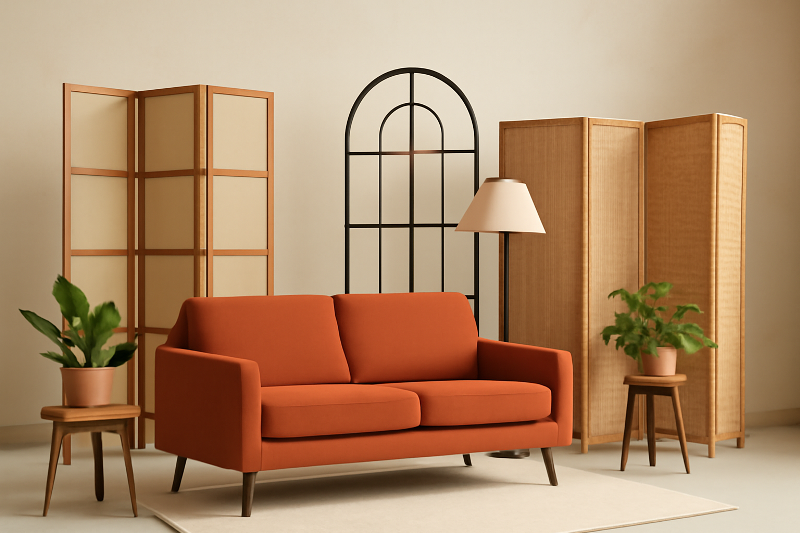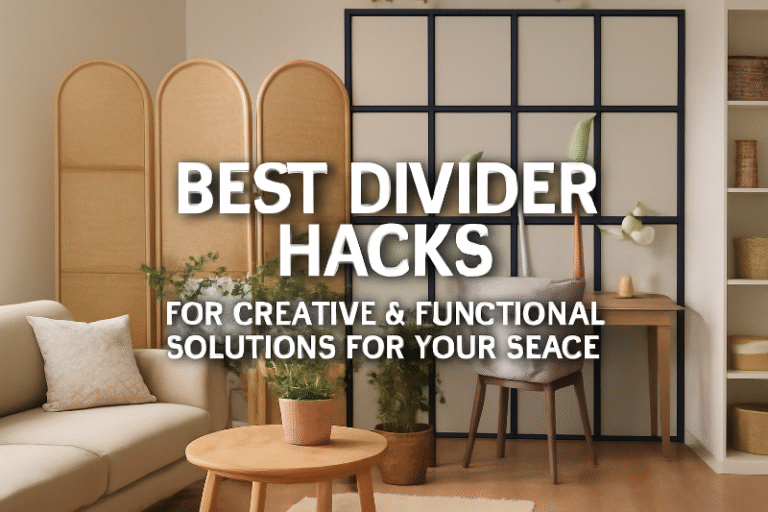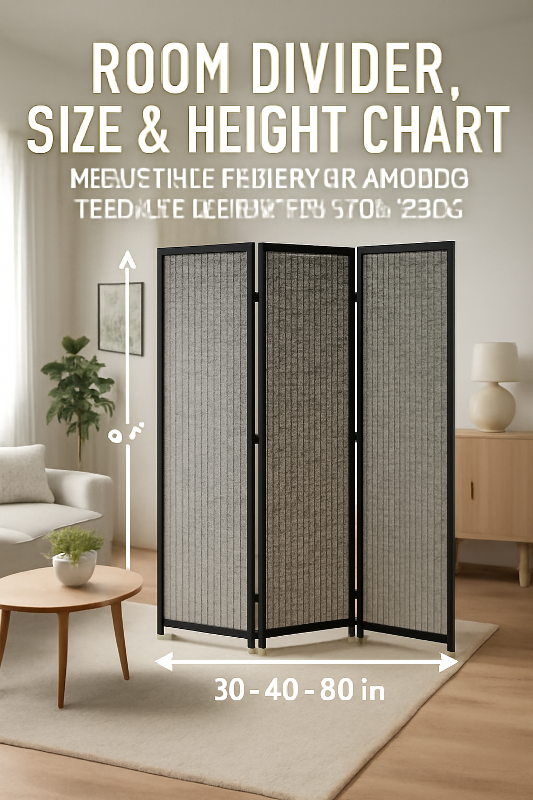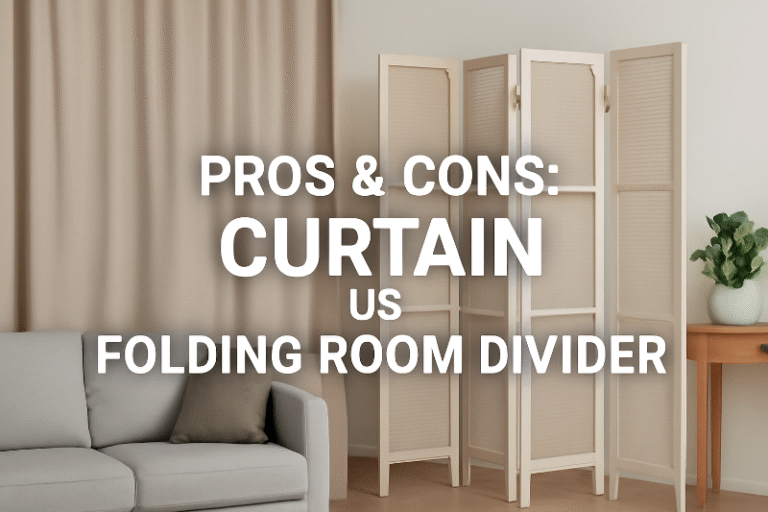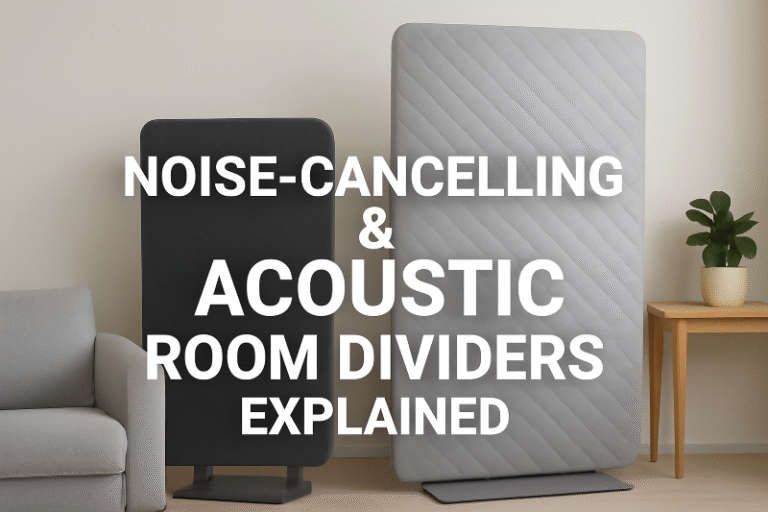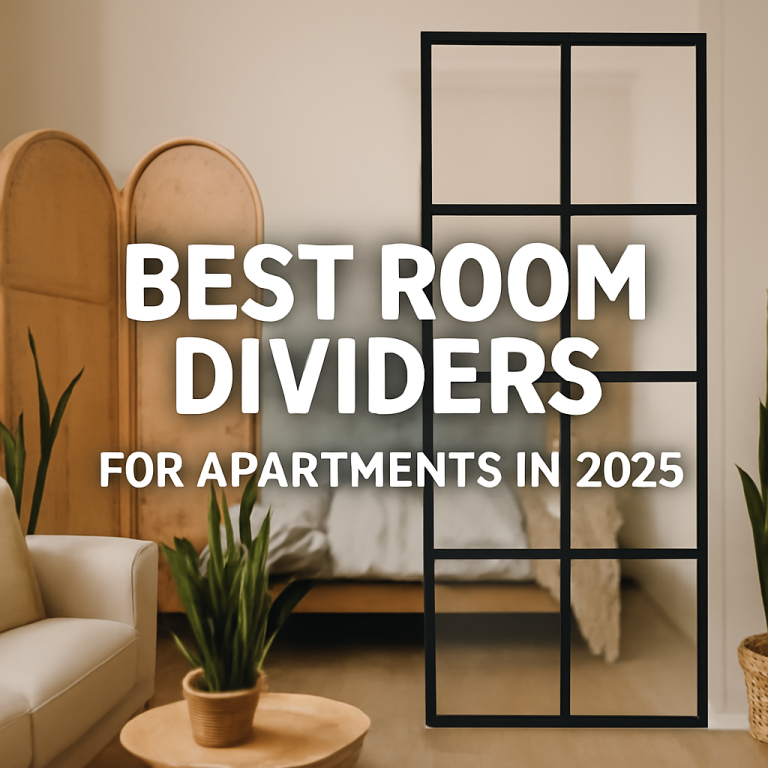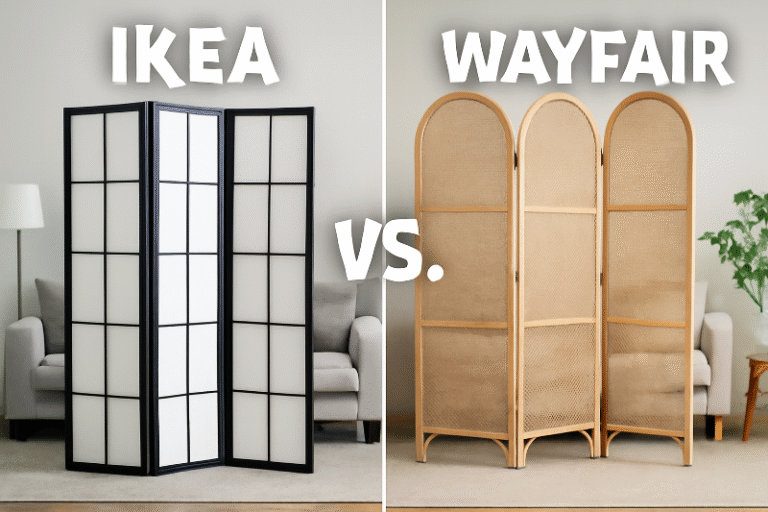Room dividers are one of the most effective ways to enhance the functionality and style of your living space. Whether you’re dealing with an open-concept apartment or simply need to carve out a designated area within a room, choosing the right room divider can significantly improve your space’s layout. But with so many options available, how do you know which one is best for your needs? This guide will walk you through key factors to consider when selecting the perfect room divider for your space.
1. Understand the Purpose of the Divider
Before choosing a room divider, it’s crucial to define its purpose. Ask yourself the following questions:
- Do you need privacy? If you’re using the divider to separate sleeping areas or create private nooks, you may want a divider that offers more coverage.
- Are you dividing a large room into smaller zones? For instance, creating a home office or a dining area in an open-plan living room will require a more substantial divider.
- Do you want decorative value? If the divider is primarily for visual appeal, a stylish screen or artistic panel may suffice.
- Is noise reduction a priority? In a shared living space or a home office, acoustic properties can be essential. Some room dividers are designed to absorb sound, which can be helpful for quiet spaces.
Identifying the primary function of the divider will guide your choice, narrowing down the material, size, and design that suits your needs.
2. Choose the Right Material
The material of the room divider can significantly impact its look and functionality. Here are a few material options and their benefits:
– Wood Dividers
Wood is a classic material that offers strength and elegance. It’s perfect for dividing rooms in both modern and traditional apartments. Wood dividers are often available in folding or sliding options, and they can provide both privacy and structure.
- Pros: Durable, provides good privacy, versatile design options.
- Cons: Heavier than fabric or plastic, can be more expensive.
– Fabric Dividers
Fabric dividers are a flexible option that can be hung from tension rods or mounted on tracks. They come in a variety of colors and patterns, making them ideal for adding a touch of style to a space.
- Pros: Lightweight, easy to install, budget-friendly.
- Cons: Less durable, may not provide complete privacy or soundproofing.
– Metal Dividers
Metal dividers offer a sleek, industrial look that complements modern, minimalist spaces. They are sturdy and often used in combination with other materials like wood or fabric.
- Pros: Modern aesthetic, durable, low-maintenance.
- Cons: Can be heavy, may feel cold or stark in certain settings.
– Glass or Acrylic Dividers
Glass and acrylic dividers allow light to pass through, creating a sense of openness while still providing separation. These materials are ideal for bright spaces where you don’t want to block out natural light.
- Pros: Elegant, transparent, modern appeal.
- Cons: Can be fragile, limited privacy.
– Bamboo/Rattan Dividers
Bamboo or rattan dividers are lightweight and bring a natural, organic feel to a space. They’re a popular choice for bohemian or coastal-style interiors.
- Pros: Eco-friendly, lightweight, stylish.
- Cons: May not offer complete privacy or soundproofing.
3. Consider the Size of Your Space
The size of the room and the area you want to divide plays an important role in selecting the right divider. Consider the following points:
- Height: A taller divider can provide more privacy and a more substantial separation between spaces. However, if your space has high ceilings, a shorter divider might feel out of proportion.
- Width: A wider divider is ideal for larger rooms, as it can cover more area and create distinct zones. Adjustable or foldable dividers are a good choice for flexibility in smaller apartments.
- Adjustability: If you need flexibility, look for dividers that can be expanded, contracted, or moved easily. Folding and accordion-style dividers offer the best versatility.
If you’re dealing with a small apartment, go for dividers that are lightweight and easy to move around, such as curtains or folding screens. For larger spaces, sturdier options like shelving units or solid panel dividers work well.
4. Choose a Design That Complements Your Decor
The divider you choose should enhance the overall look of your space. Here are some design considerations to keep in mind:
- Style: Look for a divider that matches your apartment’s aesthetic. For instance, if your space is minimalist, you might prefer a simple, sleek metal or glass divider. If your decor is more eclectic, you could opt for a vibrant, patterned fabric divider.
- Color: Choose a color that complements your existing color scheme. Neutral tones like white, grey, and black work well in most spaces, while bolder colors can make a statement in more adventurous interiors.
- Pattern & Texture: Dividers can also act as visual focal points. If you choose a fabric or screen divider, think about patterns or textures that tie in with your room’s design elements, such as stripes, florals, or geometric prints.
5. Consider Installation Requirements
Some room dividers require a more permanent installation, while others can be set up with minimal effort. Here are your options:
- Freestanding Dividers: These are the most versatile and easiest to install. They don’t require any drilling or mounting, making them perfect for renters or anyone who wants to avoid damaging the walls. Folding screens and freestanding panels are common examples.
- Mounted Dividers: These dividers are mounted on the ceiling or walls. They provide more stability and are ideal for permanent room separation. Options like sliding barn doors or curtain dividers often require some installation work.
Make sure to check if the divider requires any special mounting hardware, tools, or professional installation, especially if you’re in a rental property.
6. Consider Privacy and Soundproofing Needs
If privacy is a top priority, choose a divider that provides more coverage. Solid panel dividers, wood screens, and fabric curtains offer the best privacy, as they block the view between rooms. On the other hand, if soundproofing is important, look for dividers that are designed to absorb noise. Acoustic dividers made from sound-dampening materials are ideal for home offices or shared living situations.
7. Budget Considerations
Room dividers come in a wide range of price points, from budget-friendly fabric screens to high-end wooden or sliding glass panels. Determine your budget before shopping, and consider whether you want a temporary, low-cost option or a more permanent, designer piece. Don’t forget to factor in potential installation costs if the divider requires mounting or professional assistance.
8. Top Recommendations Based on Space Needs
- For Small Apartments: Foldable screens, fabric curtains, or multi-functional dividers that also offer storage work best. IKEA’s KALLAX shelving unit or a lightweight folding screen is ideal for tight spaces.
- For Shared Living Spaces: Acoustic dividers or solid wood screens provide both privacy and noise reduction. The Versare MP10 Accordion Divider is a good choice for reducing sound while dividing large rooms.
- For Home Offices: To create a designated work zone, use a taller, more solid divider, such as a sliding panel or a bookshelf divider. This keeps your office space separated from the rest of your living area.
Conclusion
Choosing the right room divider for your space ultimately depends on your needs, the size of your space, and the aesthetic you’re aiming for. Whether you prioritize privacy, soundproofing, or style, there is a wide range of room dividers available in 2025 to suit every type of apartment. By considering factors like material, design, size, and ease of installation, you can make an informed choice that will enhance the functionality and aesthetic of your home for years to come.
